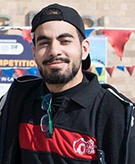Teledyne Marine is pleased to announce the winners of our 2020 Academic Product Grant. This grant offers universities and institutions the opportunity to utilize several of our flagship products free of charge for up to a six-month period to support their research programs.
Teledyne products offered under the 2020 grant included: Acoustic Doppler Current Profilers (ADCPs), Acoustic Releases, Doppler Velocity Logs (DVLs), Multibeam and Imaging Sonars, and Hydrophones. Applicants were encouraged to apply for one or more of these technologies to support their field applications.
Details of this year’s awardees and their corresponding project details can be found below:

Learn more about the winners
Grant Author: Jonathan Wallen is a Ph.D. candidate at the University of Hawai`i at Manoa in mechanical engineering and the lab manager of the Robot Autonomy and Navigation (RAN) laboratory at UH Manoa. His research focuses on high fidelity navigation and control of robots, specifically AUVs.
University of Hawaii at Manoa, Robot Autonomy and Navigation Lab
Product grant: Teledyne RESON Hydrophone
Autonomous underwater vehicle (AUV) docking and wave energy converters (WECs) have been investigated thoroughly over the past decades. The proposed WEC-based AUV docking mobile station enables both in-situ wave energy conversion and offshore AUV charging. This novel hybrid platform expand beyond the current spatial and temporal limitations of ocean observation. As the lead on AUV and docking station development for a collaborative effort with WEC experts from the Hawai`i Nature Energy Institute, our group is at the forefront of addressing the challenge of AUV docking to a highly dynamic, oscillating WEC. By utilizing relative sensing and online dynamics system identification, we aim at performing dynamic rendezvous of the AUV to the WEC based docking station in ocean environments in Hawai`i. We will use Teledyne’s RESON hydrophones to create a short baseline localization system for vehicle to locate with respect to the docking station.
This work is supported by the College of Engineering of the University of Hawai`i at Manoa, the Hawaii Natural Energy Institute, the Applied Research Laboratory, and the Renewable Energy Design Lab.
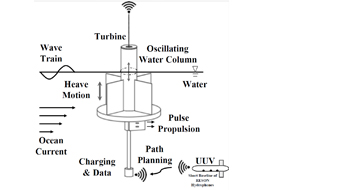

Principal Investigator: Dr. Zhuoyuan Song; Assistant Professor of Mechanical Engineering and Cooperative Graduate Faculty of Ocean and Resources Engineering; Director of the Robot Autonomy and Navigation Laboratory at UH Manoa
Scottish Association for Marine Science (SAMS).
Product grant: Teledyne RESON T50 Multibeam Sonar / INS
The project's aim is to assess the physical stability of the seafloor in the extremely energetic tidal flows of western Scotland, UK: The Gulf of Corryvreckan and the Falls of Lora, Loch Etive.
The nature of the seabed beneath extreme tidal flows (flow speed > 4m/s) has been little studied, mainly due to the obvious operational challenges posed by the area's hydrodynamics. However, these regions are now receiving research attention due to their value for renewable energy and the insights into turbulent flows that they can bring.
As a student researcher, I am working with a team from the Scottish Association for Marine Science (SAMS) on plans to develop survey techniques for mobile bedform analysis. By comparing two bathymetric data sets (one collected in 2012, and one using Teledyne equipment scheduled for 2020), bedform migration rates and thence the physical stability of the seabed can be quantified.
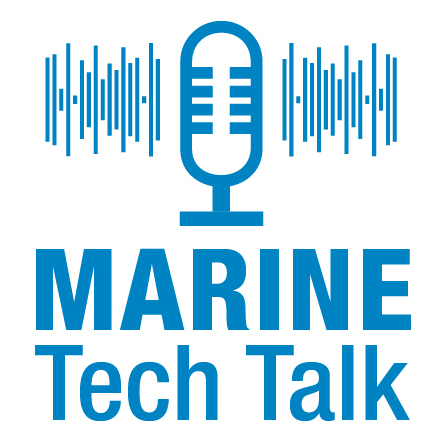 Listen to the Teledyne Marine Tech talk Podcast: Episode 10 - Investigating Seabed Stability in Western Scotland >
Listen to the Teledyne Marine Tech talk Podcast: Episode 10 - Investigating Seabed Stability in Western Scotland >
![]() Watch Christian Armstrong present the project >
Watch Christian Armstrong present the project >
Grant Author / Principal Investigator:
Christian Armstrong
PhD candidate and student researcher, Scottish Association for Marine Science (SAMS)


CICIMAR-IPN
Product grant: Teledyne RDI Sentinel V ADCP
The bay of La Paz is the largest in the Gulf of California. It has two entrances separated by an island chain (Espiritu Santo Archipielago). To the north is the deepest, the Boca Grande, reaches 400 m depth, while in the south the San Lorenzo channel is shallower (60 m) and dominated by tidal dynamics. The city of La Paz is also in the south of the bay, in a small coastal lagoon separated by a barrier island. The bay is influenced by the dynamics of the Gulf of California mostly though the northern entrance. SST and chlorophyll concentration register seasonal variability similar to the adjacent gulf. It is during the spring when the winds from a neighboring upwelling region cross the peninsula from west coast. They blow over the bay as an inverted breeze system and create anomalously conditions. This study proposes to measure current profiles to improve our understanding of the wind-induced processes in the water column, both in the advective and turbulent time scales.
 Listen to the Teledyne Marine Tech talk Podcast: Episode 12 - Current Profiling in the Bay of La Paz (bilingual episode – presented in English and Spanish) >
Listen to the Teledyne Marine Tech talk Podcast: Episode 12 - Current Profiling in the Bay of La Paz (bilingual episode – presented in English and Spanish) >
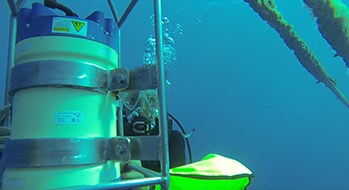
Grant Author:
MSc. Maria Yesenia Torres Hernandez, CICIMAR-IPN
Principal Investigator(s):
PI Dr. Armando Trasvina Castro, CICIESE-Unidad La Paz
Co PI Dr. Fernando Aguirre Bahena, CICIMAR-IPN
Co PI Dr. Alejandro Souza Gomez, CINVESTAV-Merida

Ain Shams University
Product grant: Teledyne RDI Pathfinder DVL
Designing and implementing an EKF SLAM module for an autonomous underwater vehicle by fusing a set of hardware sensors along with the dynamic model of the vehicle to achieve very accurate global positioning for handling underwater missions.
Also designing an automatic control module for the sub using novel control theories to obtain very accurate smooth trajectory profiles to improve the maneuverability of the sub
Affiliation:
The sub-project is part of the AUV project for ASmarine Team (Ain Shams University) participating in 2020 Robosub
 Listen to the Teledyne Marine Tech talk Podcast: Episode 13 - Developing a Low-Cost Navigational System for AUVs>
Listen to the Teledyne Marine Tech talk Podcast: Episode 13 - Developing a Low-Cost Navigational System for AUVs>
![]() Watch Samer Ahmed present the project >
Watch Samer Ahmed present the project >

Grant Author: Samer Ahmed
Principal Investigator: Dr. Mohamed Ibrahim; Coordinator of Mechatronics Engineering Program, Faculty of Engineering, AIN Shams University, Cairo, Egypt
Associate Professor, Mechatronics Engineering Department, Faculty of Engineering, AIN, Shams University, Cairo, Egypt
Former Research Fellow, Institute of Design, Robotics and Optimisation (IDRO), University of Leeds
University of Salford / Bermuda Institute of Ocean Sciences
Product grant: Teledyne RDI Sentinel V ADCP
and Teledyne Benthos Acoustic Release
Determining the levels of oceanographic connectivity between mesophotic coral ecosystems (~30 - 150m) and adjacent shallow-water reefs has become a key research priority within multiple research disciplines e.g. coral reef ecosystem resilience. Flow dynamics of three mesophotic reef sites will be quantified by ADCP deployments for a duration of 4 weeks per site to cover a lunar cycle and accurately determine tidal currents.
ObjectivesObjectives:
1. Determine flow dynamics between mesophotic and shallow water reef systems.
2. Quantify tidal influence on thermal regimes of mesophotic reefs.
3. Generate data for integration into a hydrological model of the Bermuda coral reef platform.
These data will be used to elucidate the coupling between the physical and biological processes at work. Specifically, these data will give greater insight to population connectivity information for key mesophotic species and larval dispersal pathways under different oceanographic scenarios.

Grant Author / Principal Investigator:
Timothy Noyes is a PhD candidate at the University of Salford UK. His thesis uses environmental DNA monitoring to determine the spatial and temporal trends of mesophotic fish biodiversity in Bermuda. In addition, he is a research specialist at the Bermuda Institute of Ocean Sciences whose work involves physical, chemical and biological assessments.
University of Salford / Bermuda Institute of Ocean Sciences
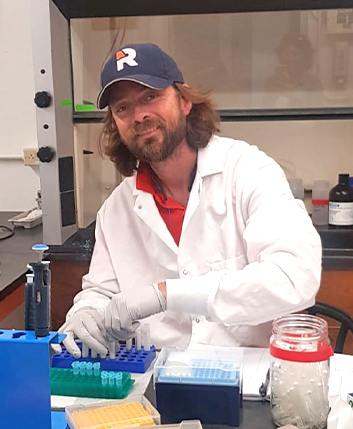
AGH University of Science and Technology
Product grant: Teledyne BlueView M900 MK2 Sonar
Water depths are still not explored frontiers. However, more and more human-made object appears on sea-bottom, ranging from ordinary plastic pollutants to forgotten naval mines. In the project, we are aiming to develop new methods for underwater object recognition and scene analysis based on the joined visual and sonar signals processed by the deep neural networks that can have a significant impact on this problem. Reliable means of detection of human-made objects will significantly increase all efforts' effectiveness simply by determining potential contamination hot-spots and prioritizing the workforce on places that are higher on the list. Autonomous drones equipped with such system could mark certain positions or even clean depths similarly to surface solutions that are developed now all around the world. On the other hand, solving such great challenge calls for active cooperation between academia and commercial research.

Listen to the Teledyne Marine Tech talk Podcast: Episode 11 - An AI Approach to Underwater Object Detection>
![]() Watch Boguslaw Cyganek present the project >
Watch Boguslaw Cyganek present the project >
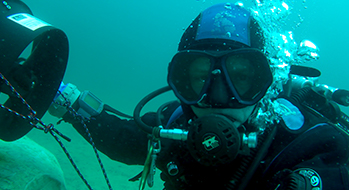
Grant Author / Principal Investigator:
Boguslaw Cyganek, full professor, researcher, and lecturer at AGH UST. An author of over a hundred of conference and journal papers and four books. Reviewer for many journals and conferences. The main area of expertise is the development of computer vision systems. Member of the IEEE, SPIE, IAPR, and SIAM.
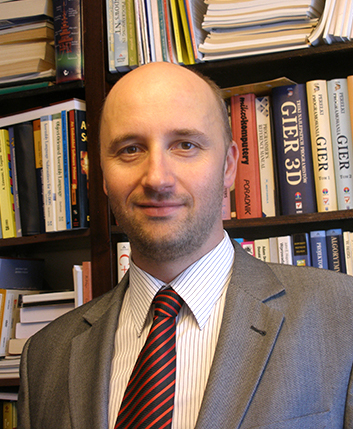
Be sure to watch our website and social media channels as we detail each of the awardees, their projects and their ensuing deployments. We look forward to sharing this journey with you!

